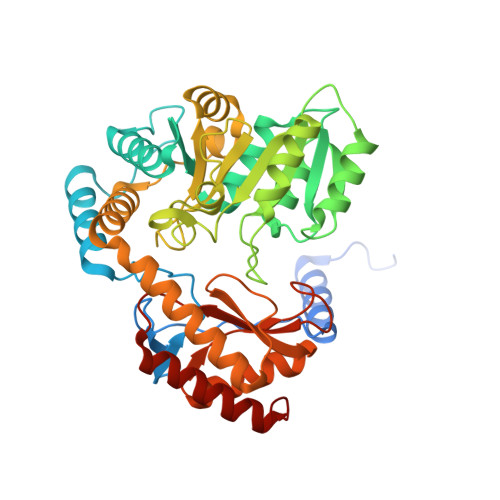Rational engineering of a thermostable alpha-oxoamine synthase biocatalyst expands the substrate scope and synthetic applicability.
Ashley, B., Mathew, S., Sajjad, M., Zhu, Y., Novikovs, N., Basle, A., Marles-Wright, J., Campopiano, D.J.(2025) Commun Chem 8: 78-78
- PubMed: 40082705
- DOI: https://doi.org/10.1038/s42004-025-01448-8
- Primary Citation of Related Structures:
8S1Y - PubMed Abstract:
Carbon-carbon bond formation is one of the key pillars of organic synthesis. Green, selective and efficient biocatalytic methods for such are therefore highly desirable. The α-oxoamine synthases (AOSs) are a class of pyridoxal 5'-phosphate (PLP)-dependent, irreversible, carbon-carbon bond-forming enzymes, which have been limited previously by their narrow substrate specificity and requirement of acyl-CoA thioester substrates. We recently characterized a thermophilic enzyme from Thermus thermophilus (ThAOS) with a much broader substrate scope and described its use in a chemo-biocatalytic cascade process to generate pyrroles in good yields and timescales. Herein, we report the structure-guided engineering of ThAOS to arrive at variants able to use a greatly expanded range of amino acid and simplified N-acetylcysteamine (SNAc) acyl-thioester substrates. The crystal structure of the improved ThAOS V79A variant with a bound PLP:L-penicillamine external aldimine ligand, provides insight into the properties of the engineered biocatalyst.
- School of Chemistry, University of Edinburgh, Joseph Black Building, David Brewster Road, Edinburgh, UK.
Organizational Affiliation:


















